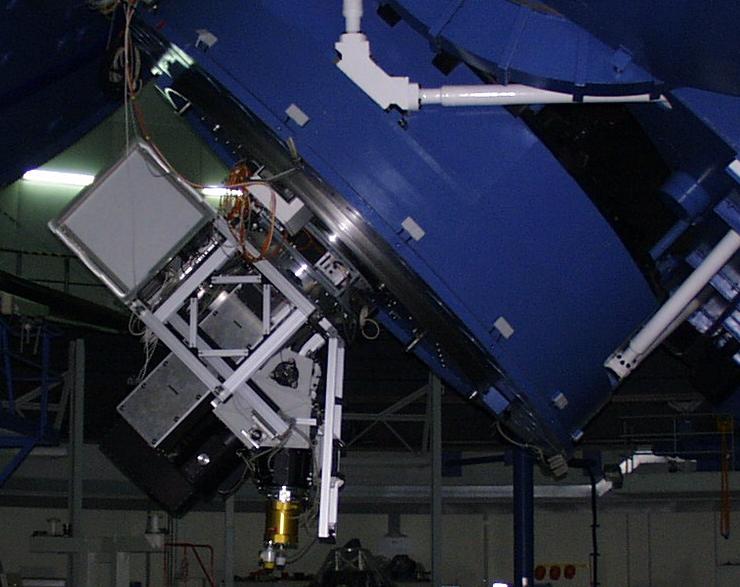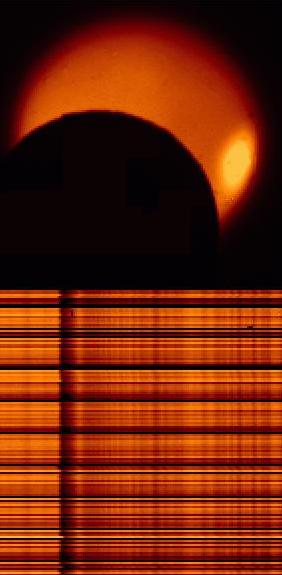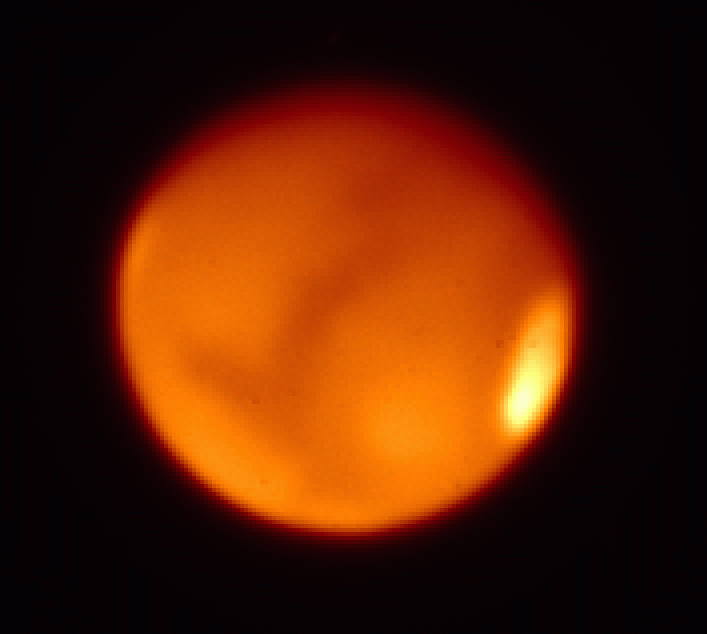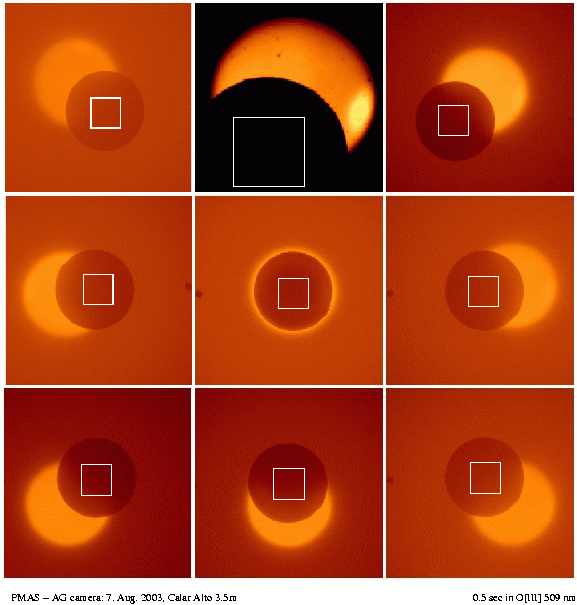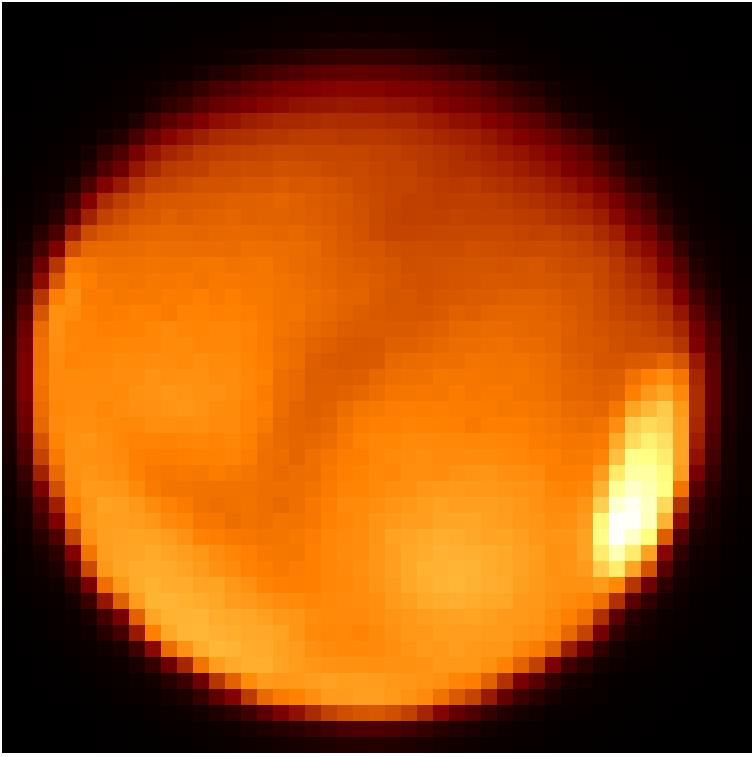
The PMAS IFU samples Mars in square spatial elements, each measuring 0.5 arcseconds on a side.
During each exposure, the instrument records a spectrum for each spatial element of the IFU simulateously.
This technique allows one to measure spatially extended objects very accurately, and with high efficiency.
 560 nm (yellow)
Wavelength ---->
710 nm (red)
560 nm (yellow)
Wavelength ---->
710 nm (red)
This picture displays a fraction of 256 spectra out of the total of 2304, which
were recorded for the entire mosaic. Each row of this frame represents a single
spectrum, the greyscale code indicating the intensity as a function of wavelength.
The wavelength scale of this observation extends from 560nm in the yellow
(left-hand side) to 710nm in the red spectral domain (right-hand side).
The dark vertical features correspond to absorption lines of the solar
spectrum, which is in essence what we see when we observe planet Mars: reflected
light from the sun, somewhat modified by the reflective characteristics of
the planetary surface ("albedo").
Technical Information:
| Observers : | Dr. Andreas Kelz, Dr. Martin M. Roth, Dr. Thomas Becker (AIP) |
| Dr. Nicolas Cardiel (Calar Alto Observatory) |
| Telescope: | 3.5 m Telescope at Calar Alto Observatory, Cassegrain Focus |
| Imager: | PMAS A&G Camera mit 510nm Filter, 3nm FWHM |
| Spectrograph: | PMAS Integral Field Spektrograph (256 spectra) , spectral resolution R=2700, wavelength range 560-710 nm |
| Observing Dates: | August 2 and 8, 2003, shortly before sunrise |
Further Information:
Potsdam Multi-Aperture Spektrograph (PMAS)
Calar Alto Observatory
GEO-Marsnacht on Saturday, August 23, 2003, at Astrophysikalisches Institut Potsdam
"Tag der Astronomie" der VdS
Created by A.Kelz, translated and edited by M.M.Roth
August 30, 2003.
